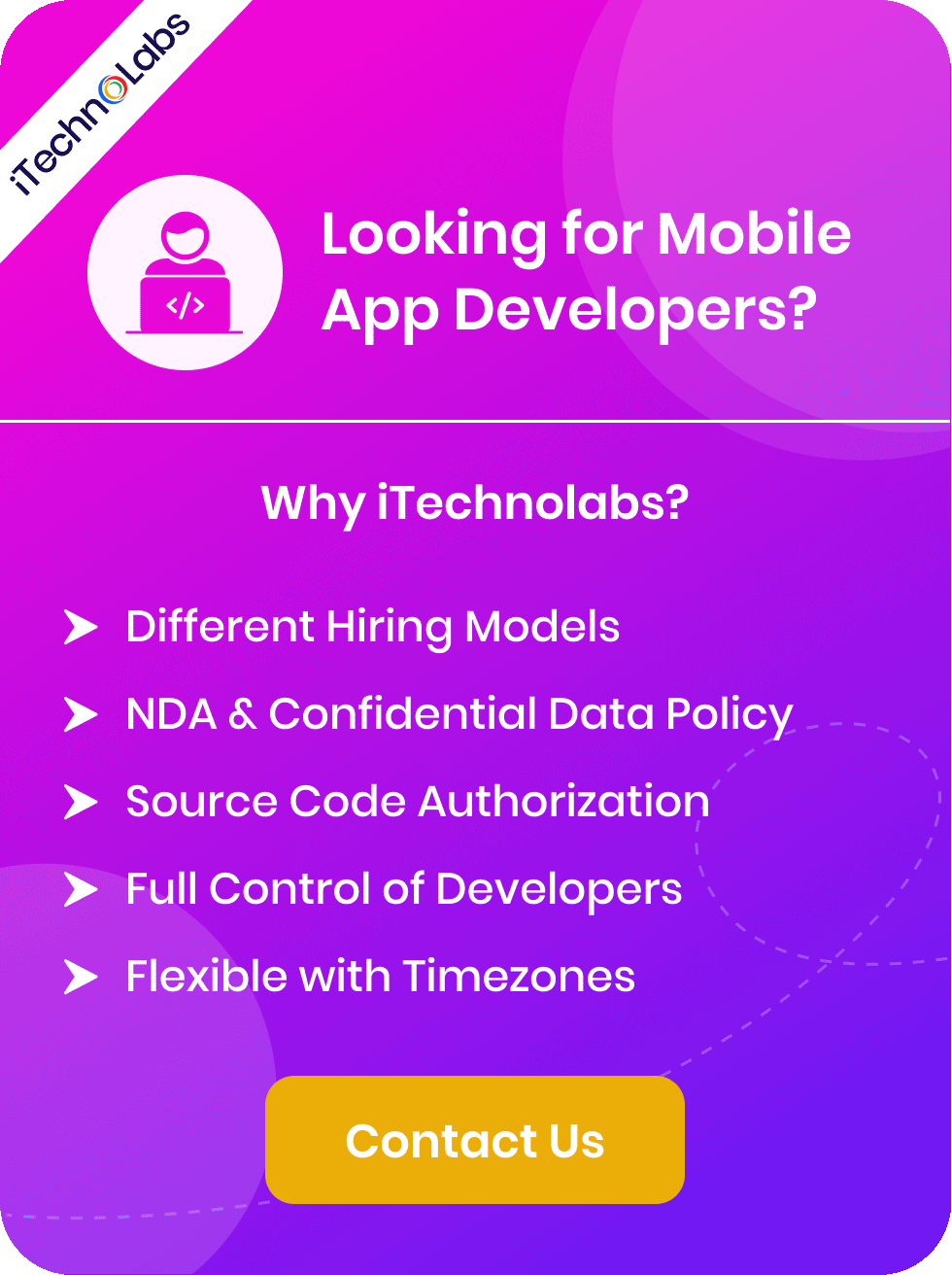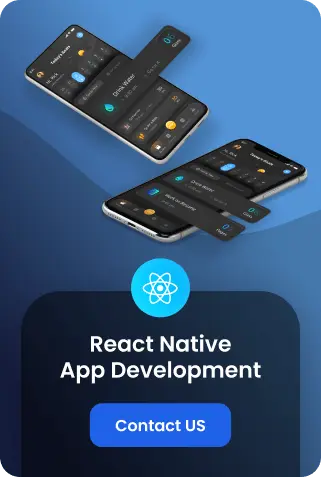Gaming technology is constantly evolving, and with the rise of innovative tools and platforms, it’s crucial to stay updated on the latest trends. From advancements in graphics and AI to the increasing popularity of virtual and augmented reality, the gaming landscape is ever-changing. These technologies are not only enhancing the visual and interactive experience for gamers but also revolutionizing the way games are developed, marketed, and played across various devices and platforms.
In this article, we will discuss the top 10 gaming technology trends that you should pay attention to in 2024. We will delve into how these trends are shaping the future of gaming and what they mean for developers, gamers, and the industry as a whole. Expect to see significant improvements in areas such as game physics, cloud gaming, and cross-platform play, which will provide more seamless and immersive experiences. We will also explore the impact of blockchain and NFTs on in-game economies and how emerging technologies like 5G are pushing the boundaries of mobile gaming. By understanding these trends, you can stay ahead of the curve and make informed decisions in this dynamic and exciting industry.
Online Gaming Industry Statistics
Before we dive into the top 10 trends, let’s take a look at some statistics that demonstrate the rapid growth and impact of the gaming industry. According to Newzoo’s Global Games Market Report 2021, the global games market is expected to reach $175.8 billion in revenue by the end of this year. This growth is fueled by the increasing popularity of gaming across various demographics and the widespread adoption of smartphones and other gaming devices. By 2024, the market is projected to surpass $200 billion, reflecting the industry’s robust expansion and its increasing influence on the entertainment and technology sectors.
The report also highlights that mobile gaming continues to be the largest segment, accounting for more than half of all game revenues worldwide. This dominance is driven by the convenience and accessibility of mobile games, which allow users to play anywhere and anytime, coupled with continuous improvements in mobile hardware and game quality. Console gaming, while traditionally popular, is also seeing growth due to new console releases and exclusive titles that attract dedicated gamers. PC gaming remains a strong segment as well, supported by advancements in graphics technology and the thriving esports scene, which continues to draw in both players and viewers.
Overall, the gaming industry’s trajectory showcases its evolving landscape and the increasing importance of staying updated with the latest trends and innovations.
Also Read: Top 10+ Worldwide best Mobile Games to Play
Top Gaming Industry Trends of 2024 You Need to Know
With the gaming industry projected to continue its rapid growth, it’s clear that staying ahead of the curve is crucial for both players and game developers alike. Here are some of the top trends that are expected to shape the gaming landscape by 2024:
1. Rise of Cloud Gaming
Cloud gaming, also known as game streaming, allows users to play games without downloading them onto their devices. This technology leverages powerful remote servers to process and stream the game directly to the user’s screen, allowing for high-quality gaming experiences on even low-end hardware. With advancements in cloud technology and internet speeds, this trend is expected to see significant growth in the coming years. Game companies like Google with Stadia and Microsoft with xCloud have already made substantial moves into this space, signaling a potential shift toward cloud-based gaming. These platforms offer a wide range of games and promise seamless gameplay across various devices, including smartphones, tablets, and TVs. As more companies and developers invest in cloud gaming, we can anticipate innovations that will further enhance accessibility and redefine the gaming landscape.
2. Metaverse
The concept of a metaverse, a virtual world where users can interact and engage with one another, has been gaining traction in recent years. This trend is expected to continue as more games incorporate elements of social interaction and create immersive experiences for players. With the growth of virtual reality (VR) and augmented reality (AR) technologies, the possibilities for creating a metaverse are becoming increasingly feasible. The potential for monetization within this space is also significant, making it an attractive prospect for game developers. As we move towards 2024, we can expect to see more games offer features that bridge the gap between real-life and digital experiences.
3. Cloud-based Gaming Ecosystem
The rise of cloud gaming has also paved the way for a more interconnected gaming ecosystem. With games being streamed directly to devices, players no longer need dedicated hardware to enjoy their favorite titles. This means that high-end gaming experiences are now accessible to a wider audience, eliminating the need for expensive consoles or gaming PCs. Additionally, the flexibility of cloud gaming allows players to enjoy their games on various devices, from smartphones to smart TVs.
This opens up numerous opportunities for cross-platform play and collaboration between developers, leading to more innovative and diverse gaming experiences. Developers can focus on creating more engaging content and unique gameplay mechanics without being limited by hardware constraints. Moreover, cloud gaming can enhance social interactions by enabling seamless multiplayer experiences, regardless of the device being used.
We can expect this trend to continue as more companies adopt cloud-based technologies and strive to create a unified gaming ecosystem. This shift has the potential to revolutionize the gaming industry, fostering greater creativity and inclusivity among developers and players alike. The future of gaming looks bright as technological advancements continue to break down barriers and bring people together in new and exciting ways.
4. Blockchain-based Gaming
Blockchain technology has also started to make its mark in the gaming industry, offering a more secure and transparent environment for players. The decentralized nature of blockchain allows for true ownership of in-game assets, providing players with full control over their virtual possessions. This means that items acquired in one game can be traded or used in another game, creating a new level of value and flexibility.
Moreover, blockchain-based games have introduced gameplay elements that incorporate cryptocurrency rewards, adding an extra layer of excitement for players. These rewards can then be used within the game or exchanged for real-world currency. This creates an opportunity for players to earn while they play and opens up possibilities for professional gaming careers.
5. Multi-platform Releases
With the rise of cloud gaming and cross-platform capabilities, we can also expect to see more multi-platform releases in the future. This means that games will be developed specifically to be played on multiple devices, whether it be consoles, PCs, or mobile devices. Multi-platform releases not only provide players with more options for how they want to play, but it also allows developers to reach a wider audience and potentially increase revenue.
Additionally, this trend promotes inclusivity by catering to different demographics and accessibility needs. For instance, a game that can be played on various platforms ensures that players with different types of hardware are not left out. It also means that features such as cross-save and cross-play will become more prevalent, allowing players to seamlessly switch between devices without losing progress. This level of flexibility and inclusiveness is something that the gaming community has been yearning for, and it promises to create a more unified and engaging gaming ecosystem as a whole.
6. Crypto-based Gaming
Another emerging trend in the gaming industry is the integration of cryptocurrency and blockchain technology. This opens up a whole new world of possibilities for game developers, from creating unique in-game economies to enabling secure and transparent transactions between players.
Crypto-based games, also known as decentralized applications (DApps), operate on a blockchain network, allowing players to own their virtual assets and trade them with other players without any intermediaries. In this way, players have complete control over their digital belongings, making the gaming experience more personal and valuable.
Moreover, blockchain-based games have introduced gameplay elements that incorporate cryptocurrency rewards, adding an extra layer of excitement for players. These rewards can then be used within the game or exchanged for real-world currency. This creates an opportunity for players to earn money while playing games, blurring the lines between gaming and real life.
7. Fitness Gaming is Here to Stay and Thrive
As technology advances, so does the way we stay active and fit. Fitness gaming has been gaining popularity in recent years, and it’s not just restricted to games like Wii Fit or Just Dance. With the rise of virtual reality (VR) technology, fitness games have become more immersive and engaging.
Virtual reality allows players to fully immerse themselves in a game’s environment, making workouts feel less like a chore and more like an adventure. It also offers a variety of fitness options, from high-intensity cardio to yoga and meditation.
What makes fitness gaming even more appealing is its accessibility. Players can now work out from the comfort of their own homes without any expensive gym equipment or memberships. This trend is likely here to stay as more people prioritize convenience and adapt to a more digital lifestyle.
8. AR and VR-based Gaming
Augmented reality (AR) and virtual reality (VR) have been making waves in the gaming industry, with games like Pokemon Go and Beat Saber gaining massive popularity. AR technology overlays digital elements in the real world, while VR creates a fully immersive experience.
These technologies not only enhance gameplay but also open up endless possibilities for game developers. With AR, players can interact with their environment in new ways, creating a more dynamic and engaging experience. VR takes immersion to the next level by allowing players to step into a whole new world.
As AR and VR technology continues to improve and become more accessible, we can expect even more innovative games that push the boundaries of traditional gaming.
9. Social Gaming
Gaming is no longer a solitary activity. With the rise of social media and online gaming platforms, players can now connect and play with others from all over the world. Social gaming not only allows for more interactive gameplay but also provides a sense of community for players.
This trend has been accelerated by the COVID-19 pandemic, as people have turned to online games to stay connected with friends and family while practicing social distancing. As we continue to navigate through these uncertain times, social gaming will likely remain a popular form of entertainment and connection.
10. The Wearable Industry Influence on Gaming
Wearable technology, such as smartwatches and fitness trackers, has been growing in popularity over the years. These devices not only track our physical activity but also have the potential to enhance gaming experiences by acting as interactive extensions of our mobile devices. They monitor our steps, heart rate, and even sleep patterns, providing valuable health insights.
For instance, companies like Nintendo have utilized wearable technology in games like Pokemon Go Plus, which allows players to catch Pokemon without constantly checking their phones. This small, wrist-worn device vibrates and lights up when a Pokemon is nearby, allowing for a seamless gaming experience while on the move.
In addition to Pokemon Go Plus, other gaming companies are exploring the integration of wearables to bring even more immersive experiences. Smart rings, VR headsets, and augmented reality glasses are some of the innovations being tested to amplify the player’s engagement and interaction within the game.
This integration of wearables and gaming opens up a new realm of possibilities for game developers to create unique and interactive experiences. Imagine a future where your fitness tracker not only logs your exercise but also unlocks special achievements or characters in a game based on your physical activity. The potential to blend the digital and physical worlds in gaming is immense, paving the way for an exciting future in both fitness and entertainment.
Read More: The Role of AI in Gaming for Initiating a New Era
Why choose iTechnolabs for Game Development Services?
At iTechnolabs, we understand the importance of staying at the forefront of technology and constantly evolving with the industry. Our team of skilled software developers has extensive experience in creating innovative and immersive gaming experiences using wearable technology.
We believe that incorporating wearables into game development not only adds a unique element to the gameplay but also enhances user engagement and retention. With our expertise in both game development and wearable technology, we can bring together these two worlds seamlessly.
Our approach to game development is centered around collaboration with our clients. We work closely with them throughout the entire process, from conceptualization to deployment, to ensure that their vision is brought to life as efficiently and effectively as possible.
- Expertise in Emerging Technologies: Our team stays up-to-date with every latest advancement in both gaming and wearable technology. This continuous learning enables us to create cutting-edge experiences that push the boundaries of what’s possible in the industry.
- Customized Solutions: We understand that every client has unique needs and goals. That’s why we offer tailored game development services, ensuring a personalized approach that aligns perfectly with each client’s vision and objectives.
- Seamless Integration: Our extensive expertise in wearable technology means that we can ensure a smooth, functional integration with games. This enhances the overall user experience by making the technology feel like a natural extension of the gameplay.
- Collaborative Process: We believe in the power of collaboration. By working closely with our clients throughout the development process, we ensure that their vision is effectively realized. This partnership approach leads to better outcomes and more satisfying results for both parties.
- User Engagement Focus: By incorporating the latest wearable technology, we design games that significantly increase user engagement and retention. Our innovative and interactive gameplay mechanics keep players coming back for more.
- Comprehensive Support: From the initial concept through to final deployment, we provide full support. This ensures not only a successful launch but also the ongoing success and evolution of the game.
- Proven Track Record: Our team of experienced developers has a strong history of delivering high-quality, immersive gaming experiences. These games resonate deeply with players, creating lasting impressions and strong brand loyalty.
Are you looking for a game development company?
Contact us!
Choosing iTechnolabs for game development services offers a multitude of advantages. Firstly, our cutting-edge technology ensures that your game will stay at the forefront of the industry. We continually integrate the latest advancements in wearable tech, VR, and AR to create a highly immersive and interactive experience. Secondly, our customized solutions cater to the unique needs of each client, ensuring a tailored approach that perfectly aligns with your vision and objectives.
Our commitment to seamless integration with wearable technology enhances user experience by making gameplay more natural and intuitive. Additionally, our collaborative process means that you are involved every step of the way, guaranteeing that the end product meets your expectations and requirements. This partnership leads to better outcomes and more satisfying results.
- Advanced Technology Integration: Utilization of the latest advancements in wearable tech, VR, and AR creates a cutting-edge, immersive gaming experience.
- Customized Solutions: Tailored approaches ensure that each game aligns perfectly with the client’s unique vision and objectives.
- Enhanced User Engagement: Innovative gameplay mechanics designed to increase user retention and engagement, keeping players invested.
- Comprehensive Support: Full support throughout the game development lifecycle, from initial concept to final deployment and ongoing updates.
- Experienced Team: A proven track record with a dedicated team of skilled developers who deliver high-quality, immersive gaming experiences.
- Seamless Wearable Integration: Enhanced user experience through natural and intuitive gameplay facilitated by seamless wearable technology integration.
- Collaborative Process: The involvement of clients at every step ensures the final product meets all expectations and requirements, leading to higher satisfaction.
Important: 50+ Innovative Game Development Ideas for Aspiring Entrepreneurial Ventures
Conclusion:
Our company takes pride in our expertise and proven track record in developing innovative games that seamlessly integrate with the latest wearable technology. Our customized solutions, advanced technology integration, and comprehensive support ensure a high-quality end product that exceeds expectations. With a collaborative approach and an experienced team, we strive to create immersive gaming experiences that enhance user engagement and satisfaction. Partner with us today to bring your vision to life and revolutionize the world of gaming through wearable technology.
Frequently Asked Questions
1. What are some popular trends in the gaming industry?
The gaming industry is constantly evolving, and several emerging trends have gained popularity in recent years. These include virtual reality, which immerses players in a fully digital environment, and augmented reality, which overlays digital elements onto the real world. Esports, or competitive gaming, has also surged in popularity, drawing large audiences and professional players. Cloud gaming allows players to stream games directly from servers, reducing the need for powerful hardware at home. Additionally, the integration of wearable technology, such as VR headsets and motion-tracking devices, is enhancing the gaming experience by making it more interactive and immersive. These trends are shaping the future of gaming and offering new ways for players to engage with their favorite games.
2. Why is the gaming industry among the fastest-growing sectors?
The gaming industry has experienced rapid growth in recent years due to several factors. First, advancements in technology have allowed for more sophisticated and immersive games, attracting a larger audience. The rise of mobile gaming has also contributed to the industry’s growth, as it allows for easy accessibility and convenience for players. Additionally, the popularity of esports has brought in significant revenue through sponsorships, merchandise sales, and live events. Lastly, the integration of new technologies such as virtual reality and augmented reality has opened up new possibilities for game developers and attracted a diverse range of players.
3. What are the benefits of hiring a game development company?
Hiring a game development company can provide numerous benefits for individuals or businesses looking to create their video games. Some of these benefits include:
- Expertise and Experience: Game development companies have teams of professionals with extensive knowledge and experience in creating various types of games. They are well-versed in the latest technologies, trends, and techniques in the industry, ensuring high-quality and innovative game designs.
- Cost-effective: Developing a game from scratch can be a costly and time-consuming process. By hiring a game development company, you can save on expenses such as hiring individual developers, and purchasing software licenses, and equipment.
- Time-saving: Game development companies have streamlined processes in place to efficiently create games within set timelines. This allows you to focus on other aspects of your business while leaving the development to the experts.
- Access to resources: Game development companies have access to a wide range of tools, software, and resources that may not be available to individual developers or businesses. This can result in more advanced and polished games.
- Customized solutions: A game development company can work closely with you to understand your vision and create a game tailored to your specific needs and requirements. They can also provide valuable insights and suggestions based on their expertise.
4. How to choose the right game development company?
Choosing the right game development company is crucial to the success of your game. Here are some factors to consider when making your decision:
- Portfolio: Take a look at the company’s portfolio and previous projects to get an idea of their expertise and style. Look for games that are similar in genre or complexity to what you have in mind.
- Reputation: Do your research and read reviews from past clients to get a sense of the company’s reputation and their satisfaction with the services provided.
- Team and Expertise: Look into the team members’ profiles, experience, and skills to ensure they have the necessary expertise to bring your game idea to life.
- Communication and Collaboration: It is essential to have clear communication channels with the game development company and establish a collaborative working relationship. This will ensure that your vision is understood and executed effectively.
- Cost and Budget: Consider your budget and the cost of services provided by the game development company. Keep in mind that quality work may come at a higher price, but it can also lead to a better end product.
5. How much does it cost to develop a game?
The cost of developing a game can vary greatly depending on various factors such as the complexity of the game, the platform it will be developed for, and the chosen game development company. It is best to consult with different companies and get quotes to determine an estimated cost for your specific project.
Generally, smaller indie games can range from $10,000 to $100,000, while larger AAA games can cost anywhere from $500,000 to millions of dollars. Keep in mind that these estimates are just ballpark figures and can vary significantly.






